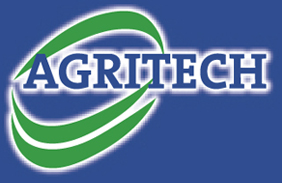With weaning having occurred/occurring on most farms currently, it is important to avoid setbacks as this can often be a stressful time for calves.
Firstly, weaning should only ever occur once calves are consuming at least 1.5 kg of concentrate per head per day in group scenarios. Alongside this, gradual weaning is advised to minimise stress levels in young calves and to allow them to increase dry matter intakes over a prolonged period.
During the first grazing season, heifer calves should have a good consistent growth rate of 750g /day or 20kg/month. Calves should always have access to high-quality grass, and depending on target weight gain and grass availability, a quality concentrate supplementation may be required. Typical advice is to feed meal at least 6 weeks post-weaning/turnout and reintroduce meal again in autumn if desired weights are not being met.
Setbacks that occur now or over the first grazing season will result in heifers struggling to meet target weights in the future and can result in these heifers not making it to the parlour.
What is Summer Scour?
Year on year, in the proceeding weeks after turnout to grass, cases of calves suffering from setbacks are reported, typically described as Summer Scour Syndrome or calf wastage.
Lush grass is very high in oils like CLA (conjugated linoleic acid), sugars and potentially nitrogen, and to a young undeveloped rumen this can be hard to adjust to. In addition, low covers of grass have very little fibre, which is a key substrate for good rumen health.
It’s often asked why Summer Scour Syndrome was not an issue until recent years, and the short answer is that we are victims of our own success. Grassland management has dramatically improved over the past number of years. Calf rearing has also improved, and we are typically weaning calves at 8-10 weeks of age. It is also worth noting that ditches are now typically fenced off to youngstock where historically they would have been used as a source of fibre by calves.
In severe cases or if prolonged, rumen function can be severely impaired and B vitamins may no longer be manufactured by the rumen, resulting in blindness and ‘star-gazing’.
Note: Where poor thrive/scouring is an issue at grass post-turnout, Coccidiosis should be the first port of call to rule out.
Avoiding the issue:
Ideally, the rumen is developed over the milk feeding period/pre-weaning by offering ad lib access to concentrates (18% Crude protein crunch/nut), and clean fresh straw to reduce your risk of Summer Scour Syndrome.
Below are several management practices that can help combat against the onset of Summer Scour Syndrome symptoms this season, a few which will be farm/system dependent:
- Offering concentrates in the weeks post-turnout will help to avoid overindulging on rapidly digestible lush grass. Hungry calves are more likely to gorge on lush covers.
- During periods of rapid growth, avoid letting calves into low covers of grass. Until rumens are well developed and luxury uptake of nitrogen is not a problem, target covers of at least 1,200-1,400 kg DM/ha for 8-10 weeks after turnout.
- The use of Agritech’s Rumicare in meal pre and post-weaning will help the buffering capacity in the rumen, decrease the risk of acidosis/ruminal upsets during the transition period and promote positive bacteria populations in the rumen (typically included at 2%).
- Give access to grass and indoor accommodation simultaneously prior to full-time turnout to ease the transition to grass.
- Offer a fibre source post-turnout. Round feeders are an option to allow access to clean dry straw.
- Use strip-wire allocations. Strip-wires allow for less selective grazing and force calves to eat stem content along with the leaf.
More Information:
For more information on reducing the stress of weaning on your calves, contact your local Agritech Sales Advisor.

